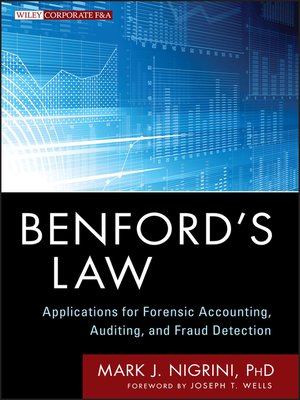Benford's Law
ebook ∣ Applications for Forensic Accounting, Auditing, and Fraud Detection · Wiley Corporate F&A
By Mark J. Nigrini

Sign up to save your library
With an OverDrive account, you can save your favorite libraries for at-a-glance information about availability. Find out more about OverDrive accounts.
Find this title in Libby, the library reading app by OverDrive.



Search for a digital library with this title
Title found at these libraries:
| Library Name | Distance |
|---|---|
| Loading... |
Benford's Law gives the expected patterns of the digits in the numbers in tabulated data such as town and city populations or Madoff's fictitious portfolio returns. Those digits, in unaltered data, will not occur in equal proportions; there is a large bias towards the lower digits, so much so that nearly one-half of all numbers are expected to start with the digits 1 or 2. These patterns were originally discovered by physicist Frank Benford in the early 1930s, and have since been found to apply to all tabulated data. Mark J. Nigrini has been a pioneer in applying Benford's Law to auditing and forensic accounting, even before his groundbreaking 1999 Journal of Accountancy article introducing this useful tool to the accounting world. In Benford's Law, Nigrini shows the widespread applicability of Benford's Law and its practical uses to detect fraud, errors, and other anomalies.
Benford's Law has 250 figures and uses 50 interesting authentic and fraudulent real-world data sets to explain both theory and practice, and concludes with an agenda and directions for future research. The companion website adds additional information and resources.







